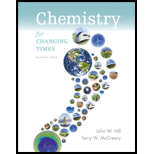
(a)
Interpretation:
Whether the bonds are polar or not and bond angle of Silane (SiH4) should be determined along with whether the molecule is whole polar or not.
Concept introduction:
- The bond is polar if there is greater electronegativity difference between the two bonded atoms.
- The bond angle is dependent upon the molecular geometry of molecule
- The molecule is polar if there are polar bonds present in them and the dipole of the bonds does not cancel each other or there is a net dipole moment associated with the molecule.
(b)
Interpretation:
Whether the bonds are polar or not and bond angle of Hydrogen selenide (H2Se) should be determined along with whether the molecule is whole polar or not.
Concept introduction:
- The bond is polar if there is greater electronegativity difference between the two bonded atoms.
- The bond angle is dependent upon the molecular geometry of molecule
- The molecule is polar if there are polar bonds present in them and the dipole of the bonds does not cancel each other or there is a net dipole moment associated with the molecule.
(c)
Interpretation:
Whether the bonds are polar or not and bond angle of Phosphine (PH3) should be determined along with whether the molecule is whole polar or not.
Concept introduction:
- The bond is polar if there is greater electronegativity difference between the two bonded atoms.
- The bond angle is dependent upon the molecular geometry of molecule
- The molecule is polar if there are polar bonds present in them and the dipole of the bonds does not cancel each other or there is a net dipole moment associated with the molecule.
(d)
Interpretation:
Whether the bonds are polar or not and bond angle of Silicon tetrafluride (SiF4) should be determined along with whether the molecule is whole polar or not.
Concept introduction:
- The bond is polar if there is greater electronegativity difference between the two bonded atoms.
- The bond angle is dependent upon the molecular geometry of molecule
- The molecule is polar if there are polar bonds present in them and the dipole of the bonds does not cancel each other or there is a net dipole moment associated with the molecule.
(e)
Interpretation:
Whether the bonds are polar or not and bond angle of Oxygen diflouride (OF2) should be determined along with whether the molecule is whole polar or not.
Concept introduction:
- The bond is polar if there is greater electronegativity difference between the two bonded atoms.
- The bond angle is dependent upon the molecular geometry of molecule
- The molecule is polar if there are polar bonds present in them and the dipole of the bonds does not cancel each other or there is a net dipole moment associated with the molecule.
(f)
Interpretation:
Whether the bonds are polar or not and bond angle of Formaldehyde (H2CO) should be determined along with whether the molecule is whole polar or not.
Concept introduction:
- The bond is polar if there is greater electronegativity difference between the two bonded atoms.
- The bond angle is dependent upon the molecular geometry of molecule
- The molecule is polar if there are polar bonds present in them and the dipole of the bonds does not cancel each other or there is a net dipole moment associated with the molecule.
Want to see the full answer?
Check out a sample textbook solution
Chapter 4 Solutions
Chemistry For Changing Times (14th Edition)
- When talking about the acidity of carboxylic acids, is it the same thing to say higher or stronger acidity?arrow_forwardUsing the following two half-reactions, determine the pH range in which $NO_2^-\ (aq)$ cannot be found as the predominant chemical species in water.* $NO_3^-(aq)+10H^+(aq)+8e^-\rightarrow NH_4^+(aq)+3H_2O(l),\ pE^{\circ}=14.88$* $NO_2^-(aq)+8H^+(aq)+6e^-\rightarrow NH_4^+(aq)+2H_2O(l),\ pE^{\circ}=15.08$arrow_forwardIndicate characteristics of oxodec acid.arrow_forward
- What is the final product when hexanedioic acid reacts with 1º PCl5 and 2º NH3.arrow_forwardWhat is the final product when D-galactose reacts with hydroxylamine?arrow_forwardIndicate the formula of the product obtained by reacting methyl 5-chloro-5-oxopentanoate with 1 mole of 4-penten-1-ylmagnesium bromide.arrow_forward
 ChemistryChemistryISBN:9781305957404Author:Steven S. Zumdahl, Susan A. Zumdahl, Donald J. DeCostePublisher:Cengage Learning
ChemistryChemistryISBN:9781305957404Author:Steven S. Zumdahl, Susan A. Zumdahl, Donald J. DeCostePublisher:Cengage Learning ChemistryChemistryISBN:9781259911156Author:Raymond Chang Dr., Jason Overby ProfessorPublisher:McGraw-Hill Education
ChemistryChemistryISBN:9781259911156Author:Raymond Chang Dr., Jason Overby ProfessorPublisher:McGraw-Hill Education Principles of Instrumental AnalysisChemistryISBN:9781305577213Author:Douglas A. Skoog, F. James Holler, Stanley R. CrouchPublisher:Cengage Learning
Principles of Instrumental AnalysisChemistryISBN:9781305577213Author:Douglas A. Skoog, F. James Holler, Stanley R. CrouchPublisher:Cengage Learning Organic ChemistryChemistryISBN:9780078021558Author:Janice Gorzynski Smith Dr.Publisher:McGraw-Hill Education
Organic ChemistryChemistryISBN:9780078021558Author:Janice Gorzynski Smith Dr.Publisher:McGraw-Hill Education Chemistry: Principles and ReactionsChemistryISBN:9781305079373Author:William L. Masterton, Cecile N. HurleyPublisher:Cengage Learning
Chemistry: Principles and ReactionsChemistryISBN:9781305079373Author:William L. Masterton, Cecile N. HurleyPublisher:Cengage Learning Elementary Principles of Chemical Processes, Bind...ChemistryISBN:9781118431221Author:Richard M. Felder, Ronald W. Rousseau, Lisa G. BullardPublisher:WILEY
Elementary Principles of Chemical Processes, Bind...ChemistryISBN:9781118431221Author:Richard M. Felder, Ronald W. Rousseau, Lisa G. BullardPublisher:WILEY





